According to the dictionary, ‘Fractures’ means the cracking or breaking of an object or material. In medical terminology, it refers to a partial or complete break in a bone.
Human bones are rigid and do not bend unless subjected to excessive pressure. The greater the force applied, the more damage to the bone.
Studies suggest that fragile and brittle bones are more prone to fractures. In today’s hectic schedule, where individuals have less time to care about their health, one can neglect their health and invite unnecessary health issues which can further affect our bones, making them weak and brittle.
The types of fractures vary in their causes, symptoms, severity, treatment measures adopted, and others. Common types of bone fractures are:
OPEN FRACTURE
Open or Compound fractures are fractures in which the broken bone is exposed to the external environment leading to a higher risk of infection. These types of fractures take a longer time to heal as compared to other fractures. The bone peeps out of the skin, thus exposing the wounded area.
Depending on the type of cause, the open fractures vary in severity and treatment measures to be adopted. Open fractures are more likely to cause severe additional injuries to the person.
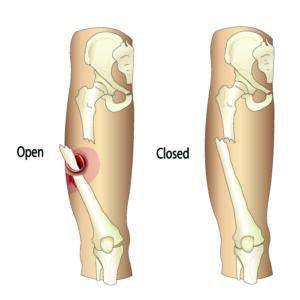
CLOSED FRACTURE
Unlike open fracture, in closed fracture, the bone does not peep out of the skin. Thus, there is no open wound exposed to the eyes. A closed fracture does not result in the bone fragments penetrating the skin but can prove serious.
GREENSTICK FRACTURE
A greenstick fracture results in the bending of a bone, thus involving the partial breaking of the bone of a leg or an arm. The break or crack does not affect the entire bone but only a part or side of the bone.
This fracture resembles a break in a green branch of a tree and thus got its name as the greenstick fracture.
These fractures are commonly seen in younger children, particularly those in their early adolescent and preadolescent phases. These fractures take less time to heal, as kids in their early years smoothly recover as their bones are in developing stage, thus making the healing process more efficient and rapid.
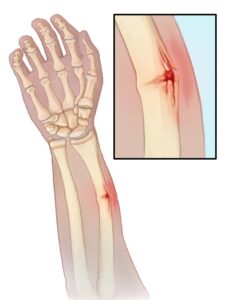
HAIRLINE FRACTURE
A hairline fracture or stress fracture refers to tiny cracks developing on the bone of a foot or a lower leg. Such a fracture generally takes around 6 to 8 weeks to ensure full mobility of the bone.
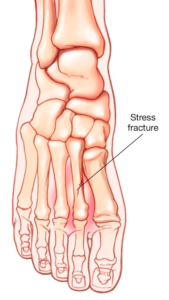
TRANSVERSE FRACTURE
Transverse fractures are complete fractures that run horizontally perpendicular to the bone (or in the opposite direction of the bone).
Like other long bone fractures, transverse fractures of long bones are susceptible to displacement. These are extremely painful and induce acute pain, swelling, bruising, tenderness, etc. If the pain persists, the patient should immediately consult an orthopedist.
OBLIQUE FRACTURE
An oblique fracture is a fracture that occurs at an angle across the width of a bone.
An Oblique fracture may result from a sharp landing on the bone at an angle after a fall. It may also occur when a bone is subject to sudden impacts or trauma, such as in vehicular accidents where the individual experiences a forceful blow from an angle or in a similar high-impact event.
Both transverse and oblique fractures create a straight break across the width of the bone.
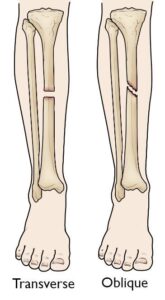
SPIRAL FRACTURE
Similar to the name, a spiral fracture spirals around the length of the bone like a spiral staircase. Spiral fractures arise due to a twisting force applied to the bone.
It commonly occurs in the long bones of the legs, usually the femur, tibia, and fibula, or long bones of the arms, usually the humerus, ulna, and radius.
AVULSION FRACTURE
The word avulsion means the action of pulling or tearing away. An avulsion fracture is a failure of a bone in which a bone fragment is pulled away from the main body by a soft tissue or ligament attached to it. These are more common in children than in adults.
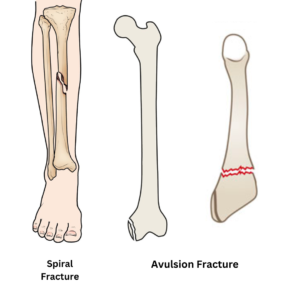
COMPRESSION FRACTURE
A compression fracture or vertebral compression fracture occurs when two bones force against each other. Older people and people having osteoporosis are at a high risk of these fractures.
Many spinal compression fractures heal in two-to-three months. But if a person has osteoporosis, a complete recovery may take a year.
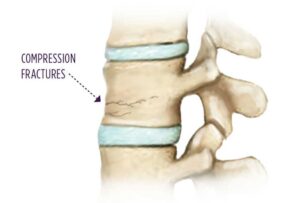
These fractures can result from daily activities as these involve bending of the spine due to trauma, shock, or force to the bone.
Book your appointment with Dr. Rahul Grover now.
Visit: https://glyraorthopaedics.com/
